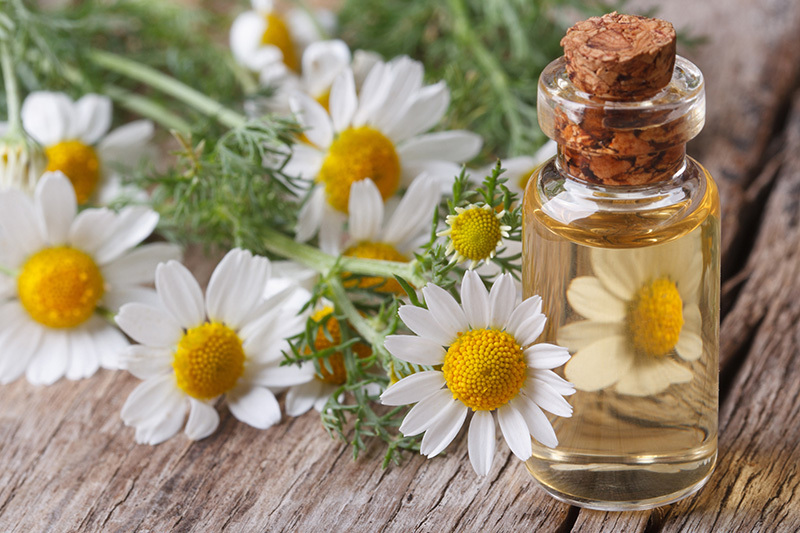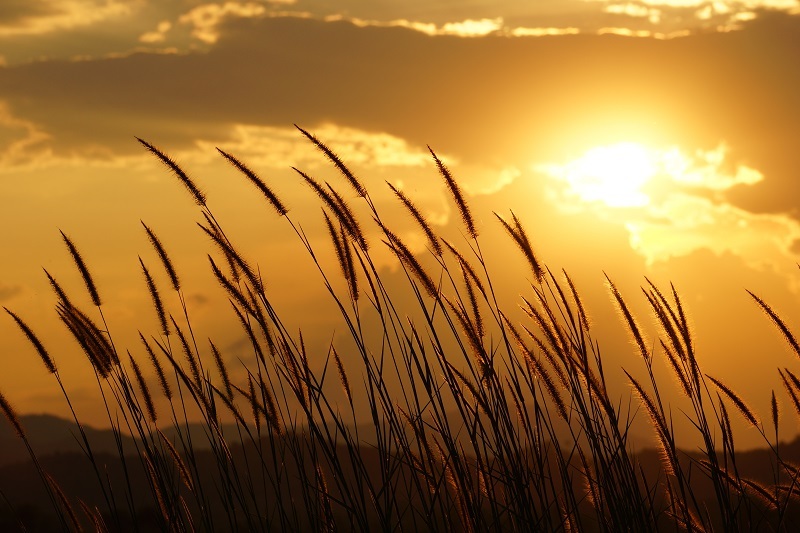8 Surprising Sunflower Facts You Probably Never Heard Of
Posted on 14/09/2025
8 Surprising Sunflower Facts You Probably Never Heard Of
Sunflowers are instantly recognizable for their bold, golden rays and towering stalks, but behind their radiant beauty, there's a treasure trove of quirky facts and scientific wonders to discover. While many of us associate sunflowers with cheerful bouquets and sunflower oil, these fascinating flowers have a rich and unexpected history. In this article, we'll delve into 8 surprising sunflower facts that even the biggest fans of these bright blooms may not know!

1. Sunflowers Track the Sun -- But Only When They're Young
Perhaps the most well-known feature of sunflowers (Helianthus annuus) is their seeming ability to follow the sun. This phenomenon, known as heliotropism, gives the sunflower its name, which literally means "sun-flower" in Greek. Surprisingly, only juvenile sunflowers, especially in budding stages, display this unique movement. Their heads turn to face the east in the morning and slowly follow the sun westward throughout the day.
- Mature Sunflowers stop tracking the sun and eventually settle facing east -- recent studies show this helps attract more pollinating bees due to the warmth the early sun provides.
- Heliotropism ceases as the sunflower ages, and the flower's stems stiffen, keeping the blossoms fixed in position.
Why Do Sunflower Heads Face East?
According to research, east-facing sunflowers can warm up earlier in the day, making them more attractive to bees. Pollinators prefer warmer flowers, which helps increase the plant's reproductive success!
2. Sunflowers Are More Than Just Yellow
When picturing a sunflower, most people imagine the classic yellow petals surrounding a dark brown center. But in the world of sunflower varieties, color diversity abounds!
- Red, orange, and even purple sunflowers exist, with cultivars like the vibrant "Moulin Rouge," "Chianti," and "Lemon Queen."
- Sunflowers can even display bi-colored or striped blooms, adding unique flair to gardens and flower arrangements.
Sunflower breeders continue to expand their colorful repertoire, making the sunflower family more versatile and visually striking than ever.
3. Sunflowers Can Be Taller Than a 3-Story Building
When it comes to plant height, sunflowers are true giants of the botanical world.
- The world record for the tallest sunflower is a staggering 30 feet 1 inch (9.17 meters), grown by Hans-Peter Schiffer in Germany in 2014.
- Most cultivated sunflowers average between 5 and 12 feet, but some varieties, especially the "Russian Giant" and "American Giant," can easily reach 16 feet or more.
Imagine walking past a sunflower that dwarfs your house -- now that's a floral spectacle!
*Why Do Sunflowers Grow So Tall?*
Scientists believe their height evolved to give them a competitive advantage, allowing them to reach above neighboring plants and absorb as much sunlight as possible during their growing season.
4. Sunflowers Are Native to North America -- Not Just Europe!
While Vincent van Gogh's paintings made sunflowers a symbol of European art, these flowers have their roots deeply planted in the soil of North America.
- Wild sunflowers originated in North America, with archaeological evidence showing their cultivation by Native American tribes as early as 3000 BC.
- They used sunflowers not just for decoration, but also as food, medicine, and even dye.
It wasn't until the 16th century that sunflowers were introduced to Europe, where they gained popularity as ornamental and later agricultural crops.
The Many Historical Uses of Sunflowers
For Native American tribes, sunflower seeds were a staple food, rich in oil and nutrition. They also utilized sunflower oil for cooking, hair conditioning, and healing wounds, while the petals and pollen served as dyes for textiles and face paint.
5. Sunflower Seeds: Not All Are Edible
When we think of sunflower seeds, we often imagine a healthy, crunchy snack or the tasty garnish atop a salad. But not all sunflower seeds are intended for human consumption.
- Commercially grown sunflowers are divided into two main types: oilseed and non-oilseed (confectionery).
- Oilseed sunflowers are used to make cooking oil, margarine, and biodiesel, thanks to their high oil content.
- Non-oilseed sunflowers produce the familiar edible seeds we snack on, roast, or use in baking.
Interestingly, some varieties are grown mainly for ornamental purposes and are not recommended for eating, as their seeds may lack significant nutritional value or taste.
Sunflower Seeds: A Global Commodity
Sunflower seed oil is one of the world's most popular vegetable oils, prized for its light flavor and high Vitamin E content. It's used in cooking, cosmetics, and even as a feedstock for sustainable biofuels!
6. Sunflowers Can Clean Up Toxic Waste
Among the most astonishing sunflower facts is their role in environmental science. Sunflowers are natural phytoremediators, meaning they can absorb toxins and heavy metals from contaminated soil.
- After the Chernobyl nuclear disaster and Fukushima nuclear crisis, sunflowers were planted to help absorb radioactive isotopes like cesium and strontium from the earth.
- Sunflowers also help remediate soils polluted by lead, arsenic, and other heavy metals, making them valuable in environmental cleanup projects worldwide.
Their fast growth and extensive root systems make sunflowers a simple yet effective choice for cleaning up environmental hazards where traditional methods might be costly or impractical.
The Science of Sunflower Phytoremediation
As sunflowers grow, their roots absorb water and nutrients, along with any toxins present in the soil. These unwanted substances accumulate in the plant tissue and can be safely removed by harvesting and disposing of the contaminated plant material.
7. Each Sunflower Head Hides Hundreds -- Even Thousands -- of Tiny Flowers
A single sunflower head might seem like one giant bloom, but in reality, it's a complex structure called a composite flower.
- Each "petal" is actually a ray floret, while the central disk is made up of hundreds or even thousands of tiny individual flowers known as disk florets.
- Each disk floret can produce a single sunflower seed after pollination, explaining how one head can hold hundreds of delicious seeds.
This ingenious design maximizes the plant's reproductive potential while providing an abundant feast for pollinators like bees, butterflies, and birds.
The Mathematical Magic: Sunflowers & the Fibonacci Sequence
Look closely at the pattern of seeds in a sunflower's center -- you'll notice a mesmerizing spiral arrangement. This is a perfect example of the Fibonacci sequence in nature, where each number is the sum of the two preceding ones (1, 1, 2, 3, 5, 8, 13, ...). This efficient packing allows the plant to fit the maximum number of seeds within the available space.
8. Sunflowers Inspire Art, Space Exploration, and Even Culture
There's more to sunflowers than biology -- they have a powerful impact on human creativity and ambition.
- Vincent van Gogh's "Sunflowers" series immortalized the flower, symbolizing happiness and the beauty of everyday life.
- In 2012, astronaut Don Pettit grew sunflowers aboard the International Space Station, documenting their growth in microgravity. Sunflowers thus became among the first flowers to bloom in space!
- Sunflowers are Ukraine's national flower and represent peace, resistance, and hope, playing a central role in modern symbolism and political movements.
Sunflowers as a Global Symbol
From ancient myths about adoration and loyalty to modern emblems of sustainable agriculture and environmentalism, sunflowers have made their mark in virtually every aspect of our lives. Their bright faces remind us of resilience, warmth, and optimism.

Bonus: More Fun Sunflower Facts
- Sunflower stems were used as a building material for lightweight, water-resistant boards during World War II.
- The largest-ever sunflower head measured an incredible 32 1/4 inches (82 cm) in diameter!
- Sunflowers can produce a mild latex, which researchers have considered as a potential sustainable source for natural rubber.
- Every part of the sunflower -- from root to leaf and seed -- has had uses in medicine, cooking, animal husbandry, and industry across cultures and centuries.
Conclusion: Sunflowers -- More Than Meets the Eye
Whether you know them from gardens, oil bottles, or classic paintings, there's no denying the sunflower's amazing complexity and adaptability. From following the sun and cleaning up toxic soils to feeding pollinators and brightening our homes, sunflowers offer a world of surprises for those willing to dig a little deeper.
Next time you pass a field of these golden giants or snack on a handful of sunflower seeds, remember these surprising sunflower facts and let your appreciation blossom. Have your own fun fact or sunflower story? Share it and help others discover why sunflowers truly are nature's sunny showstoppers!
Latest Posts
Essential Tips for Mastering Orchid Care at Home
The Real Reason We Gift Red Roses on Valentine's Day
Discover Which Bloom Best Reflects Your Unique Personality
Discover 7 Surprising Facts About Tulips You Probably Never Heard Before
Discover Your Birth Flower and Uncover What It Reveals About Your Personality






